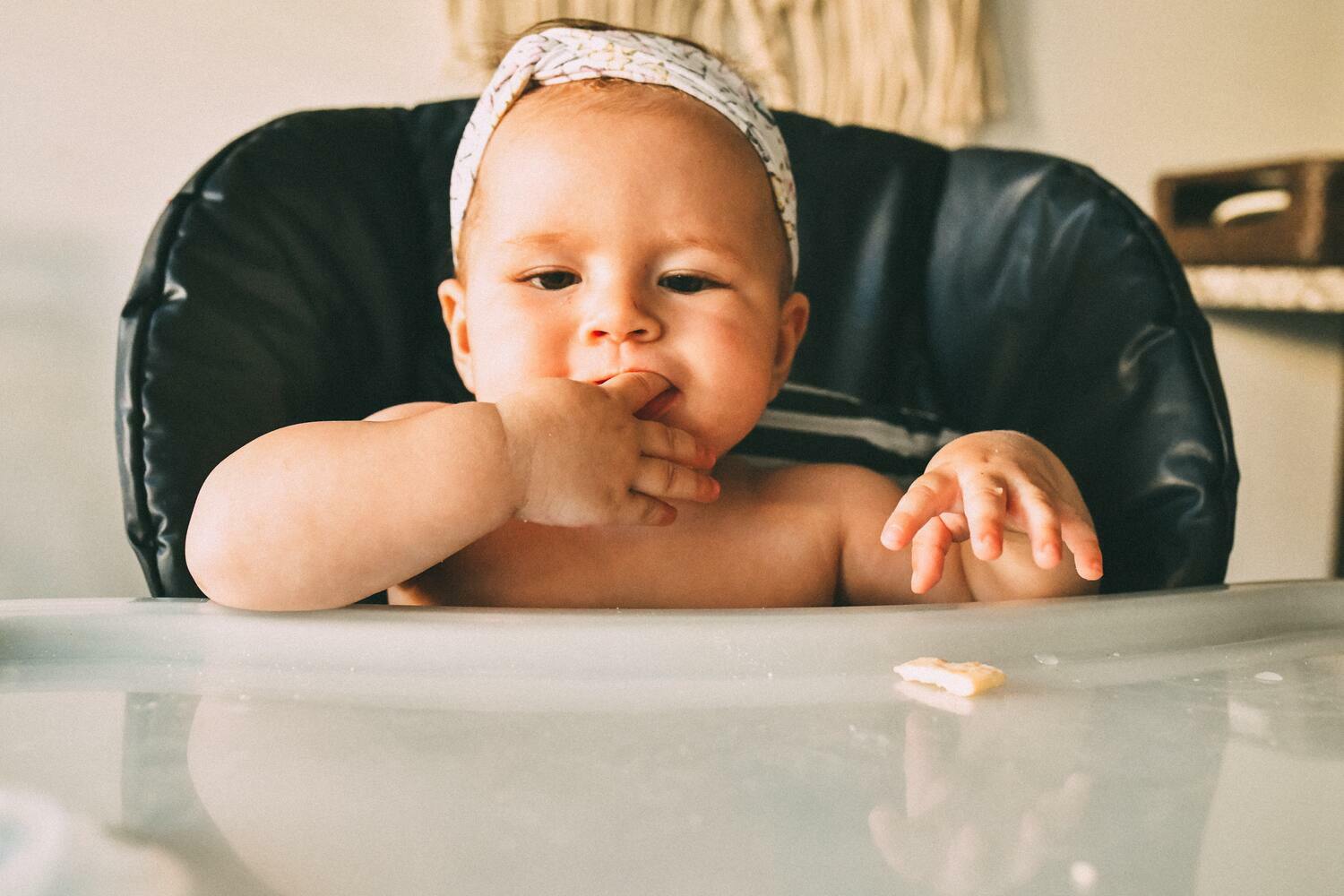How to help your baby practice their eating skills
Eating and drinking might seem like an automated process to adults, but in fact it is a very complex process. We show you what babies need to learn and how they can practise these skills.
Written by Ine De Bruycker - preverbal speech therapist at ReminCare

Eating and drinking requires a series of skills that babies need to learn. When we are born, we are not yet ready to take in food in a conscious and controlled way. During the first weeks and months, we therefore rely on a whole series of reflexes.
As we grow older, these reflexes weaken and we start building motorically learned patterns in the brain by repeating certain movements. We rely on these patterns for many of our everyday activities. This applies to suckling on the breast, on the bottle, eating purees or solid food, etc. Each texture, or the way in which food is offered, requires a slightly different motoric pattern. Think of a big tablespoon, which requires you to open your mouth much wider than with a small teaspoon. We do this without thinking. For babies, small differences in the shape of the material or the way it is offered make a big difference in which motoric scheme they need to use and whether or not this has been sufficiently practised.
At the start of spoon feeding (on average between 4 and 6 months), your baby will suddenly be expected to use a completely different motor system than the one they used for breast or bottle feeding. You will notice that the very first bites from a spoon are taken by sucking the spoon. Sometimes you will also see babies put one of their fingers in their mouth after such a bite. This is actually a trick to make it possible to swallow the bite while sucking. So, good job baby!
It is important to remember that your baby is learning. They need time to learn and practice all these new skills. It is even more important that your child is ready before taking a new step in motor development. Build this up slowly and if you have the feeling that your child is not yet ready, wait another week and then try again. There is no point in forcing it because your child's motivation plays a big role in how she will experience nutrition in the long term. Above all, observe your child!
How can you tell if your child is ready?
- You can see and hear her making more and more chewing and smacking noises.
- She shows interest in your food
- She chews a lot on toys or her own fists
- She can sit up straight, with or without support
- She spontaneously opens her mouth when you bring a spoon close to it.
What skills does your baby need to eat and how can you help?
An active attitude:
Your child's posture is very important during feeding. Your body is a single unit. If your baby is not sitting or lying properly, this will affect his or her swallowing muscles. Make sure that your baby's head is not hanging backwards. When you start spoon-feeding, it is handy to use a bouncer. For babies who can already sit up with good support, you can use a high chair. Make sure that your baby does not sink in the chair and use straps or a cushion if necessary.
Opening the mouth:
Sometimes caregivers can be tempted to push the spoon into the child's mouth without looking, because they’re watching another child or are distracted by something else. We understand that can happen but it’s important to leave your child in control of when something is put in their mouth and when it’s not. This promotes a positive attitude towards food and also encourages oral motor skills. You can, of course, help them a bit. At around 4-5 months of age, the reflexes are still present at the most hungry moments. You can use the nipple-search reflex to get them to open their mouths. To do this, hold the spoon lightly against the jaw or corner of the mouth. You will see that your baby will have the reflex to open her mouth and turn her head towards the spoon. This is the moment to put the spoon in her mouth. If your baby's lips are really pressed together and she turns her head away, this is not the time to feed her. Forcing may make your child eat more in the short term, but in the long term it will have everything but a positive influence on your child's attitude to feeding.
Biting off the spoon with the upper lip:
This is a whole new skill for your child. Biting off food from a spoon is the main responsibility of the upper lip. This is another muscle that needs to be trained. Help your child train it and avoid helping them too much by pulling the spoon upwards out of the mouth. Instead try to remove it as horizontally as possible. This means that your baby has to make more of an effort to remove the food from the spoon herself and thus exercises the upper lip function.
Moving food backwards in the mouth:
When you start spoon-feeding, your child may not yet have fully grasped how to move the food backwards in his mouth. What can help here is to have your child sit in a bouncer for the first few times. This creates a 45° position where gravity can help the baby to move the food backwards into his mouth. After a while, your child will master this skill more and will also be able to do it sitting up straight.
It is important to avoid putting the spoon deeper into the mouth. Even though you may do it with the intention of helping your baby, it can be very uncomfortable for her. There is a good chance that it will provoke a gag reflex and you will also make it more difficult for your baby to manipulate the food in her mouth if it ends up on the back of the tongue.
The sideways tongue movement:
In order to be able to chew pieces of food, your child must be able to use a sideways tongue movement to get that piece of food between her teeth. Is this not easy at first? Then place the piece (maximum 0.5 cm) between the molars yourself. Doing this, it’s important that your child opens her mouth with the intention of taking the piece. Don’t do this when the child is crying, laughing or distracted. Contact a preverbal speech therapist in time if this continues to be difficult in order to avoid an aversion to food.
Here are a few easy fixes that make it much easier to enjoy the process
You may not like to hear it but learning to eat = spilling food and getting dirty. It might take some getting used to but let this happen too! It is very disturbing for your child when someone tries to clean her face every 5 seconds. Just imagine someone cleaning your 5 after every bite... Of course, we totally understand you don’t want to wash all your baby’s clothes (and even yours) or clean your floor after every meal, but there are solutions for that too! Buy a bib with sleeves or a bib with a crumb catcher. And for your floor, there are splat mats you can very easily just wipe off! That makes the washing and cleaning up a lot less intensive. We’re not only trying to make life easier for your little one!
If your child is constantly reaching for your spoon, but you don’t have much time, you can give her her own spoon with which she can learn to scoop and bring things to her mouth. Also see this as a positive thing, your child is highly motivated to learn. Isn’t that remarkable?
Anyway, the first year of life is one full of discoveries and milestones, also when it comes to food. It’s a wonderful journey of learning and growing that you and your child are on. Enjoy the small steps, be proud of all the things your child can already do, and grow at your baby's pace. Enjoy your journey!
